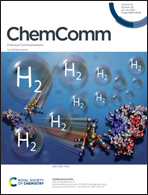Nanocomposite hydrogels for strain sensing based on optical and electrical signals: a review
Abstract
Unlike metals, ceramics, or plastics, hydrogels are semi-solid, hydrophilic polymer networks with high water content. Embedding nanostructures or nanomaterials into hydrogels can impart special properties to the composites, such as anisotropy, optical or electrical properties. With the development of nanomaterials and advanced synthetic methods, nanocomposite hydrogels have attracted growing research interest in recent years due to their desirable mechanical properties, optical/electrical functions, reversibility, stimulus sensitivity, and biocompatibility. They have opened up a broad range of applications as stretchable strain sensors in mapping of strain distributions, motion detection, health-monitoring, and flexible skin-like devices. This minireview summarizes the recent developments in nanocomposite hydrogels as strain sensors based on optical and electrical signals. The strain sensing performances and their dynamic properties are discussed. Appropriate embedding of nanostructures or nanomaterials in hydrogels and engineering of interactions between nanomaterials and polymer networks can yield significant improvements in the performance of strain sensors.



 Please wait while we load your content...
Please wait while we load your content...